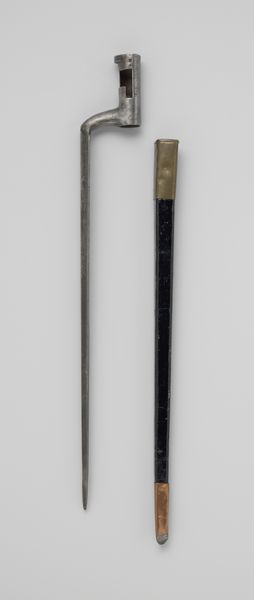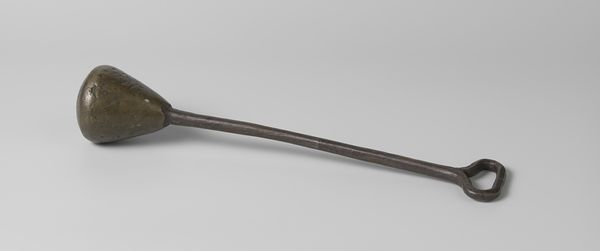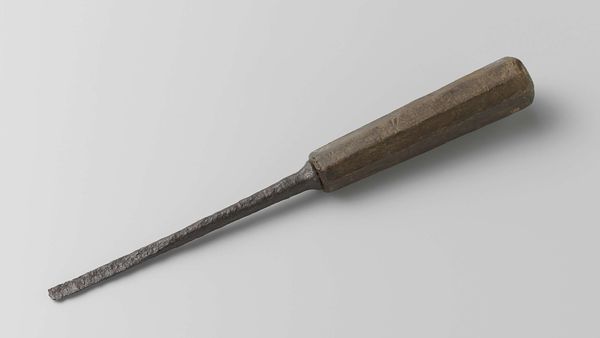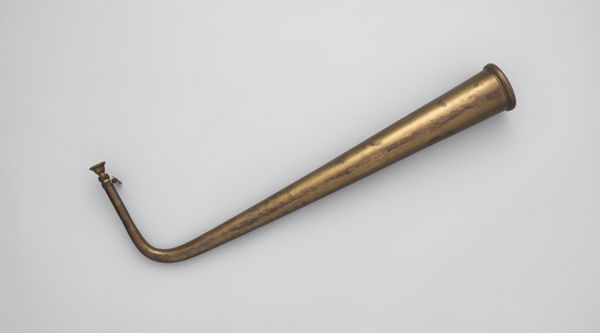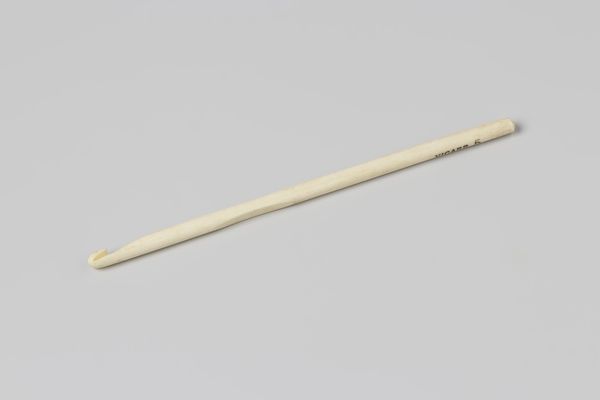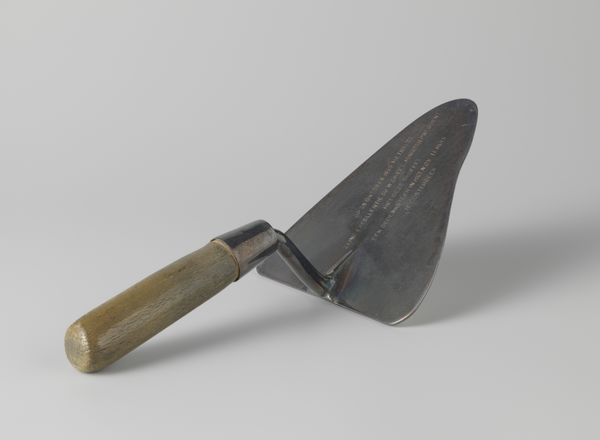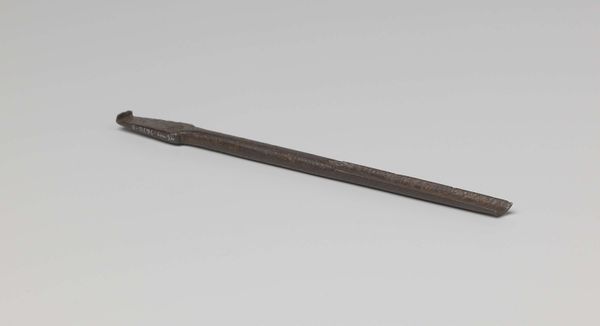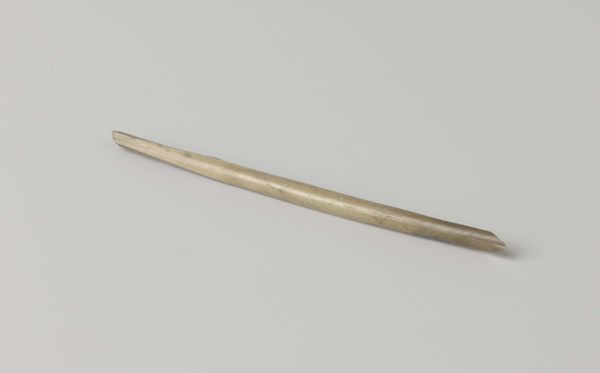
Hoedenborstel met houten handvat en gekromde borstel waarin zwarte en witte stugge haren c. 1930 - 1950
0:00
0:00
anonymous
Rijksmuseum
photography, wood
#
still-life-photography
#
photography
#
wood
Dimensions: length 25 cm, length 11 cm, length 2.5 cm
Copyright: Rijks Museum: Open Domain
Editor: Here we have an untitled photograph from around 1930-1950 depicting a hat brush with a wooden handle. It feels surprisingly austere and almost unsettling for such a mundane object. What do you see in this piece? Curator: I see a potent symbol of class and gender roles. Consider the era. The hat, meticulously cared for by such a brush, signified respectability, a carefully constructed public persona, particularly for women entering the workforce or navigating social expectations. The very act of upkeep becomes a subtle performance. Editor: That's interesting, I hadn't thought of it that way. It felt more like a forgotten relic to me. Curator: Precisely. It's about what is *not* immediately visible. The wear on the wood, the precise arrangement of the bristles – each tells a story. It evokes questions around labor. Who owned the hat, and who maintained it? Was it an act of self-care, or another form of domestic servitude? And why capture such a supposedly insignificant object? Editor: So you are saying that the photograph brings up intersectional concepts around women, work, and status? Curator: Exactly! The photograph allows us to unpack complex dynamics and start asking difficult, vital questions about history and society through an unexpectedly intimate lens. The neutrality is, in itself, quite subversive. Editor: That is much more insightful than my initial impressions, now it brings up thoughts about social constructs from that time period and a shifting role in identity. Curator: Indeed, seeing the ordinary as extraordinary is often where real understanding begins.
Comments
No comments
Be the first to comment and join the conversation on the ultimate creative platform.
